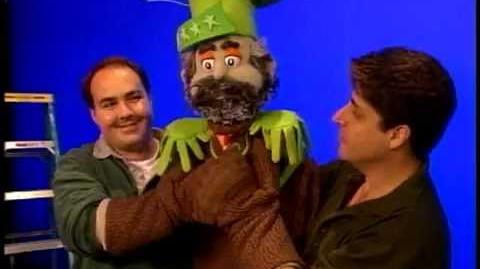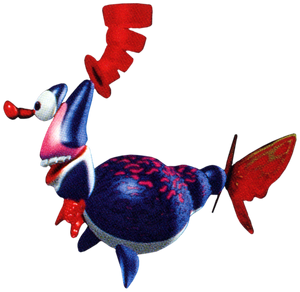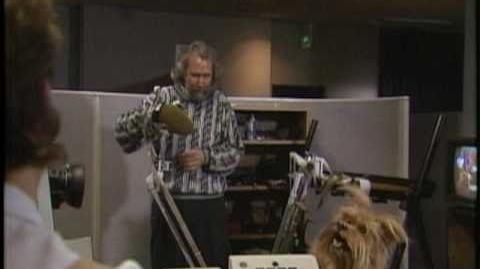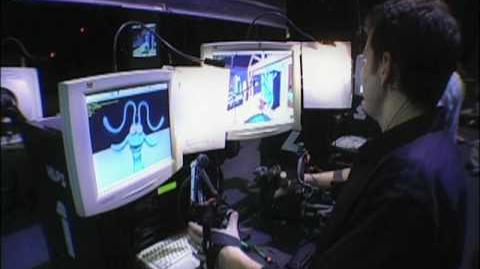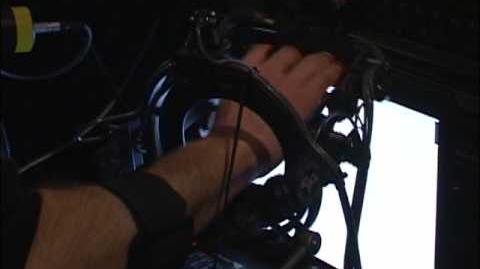Early computer animation
Henson's early Scanimate films
As early as 1970, Jim Henson started exploring the use of computer animation, and used the budding technology for some Sesame Street counting films.[1]
Henson collaborated with Digital Productions in 1986 to produce the opening title sequence for Labyrinth, featuring a computer animated flying owl.
Digital environments
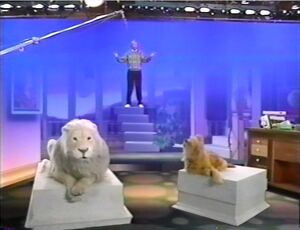
Jim Henson showcases the digital set of The Jim Henson Hour.
Henson kept abreast of developments in the field of computers and looked for opportunities to incorporate computer-generated images into his work. An outer-space television project called Starboppers that was in development in the early 1980s seemed like an ideal match. Henson got in touch with Digital Productions, an LA company whose Digital Scene Simulation capabilities had evolved from their early work shot on mechanical analog computer systems. The firm's principals, John Whitney, Jr. and Gary Demos, had worked on Westworld and 2001: A Space Odyssey respectively. At the time of Henson's meeting with Digital in 1983, they were in production with The Last Starfighter.
While Starboppers was planned to be a puppet production, Henson imagined that the background sets would be digitally created and the characters would perform before a green screen. The puppeteers, while performing, would watch their performances on television monitors, but instead of the green screen, they would see their characters within the virtual sets. In the end, the project did not come to be, but this technique with digital backgrounds was eventually used in such productions as The Jim Henson Hour, Song of the Cloud Forest, and The Wubbulous World of Dr. Seuss.[2]
Henson showed a demonstration of the digital environments used on The Jim Henson Hour in the "Secrets of the Muppets" episode.
Digital puppets
Jim Henson began to explore a marriage of digital animation and puppetry with the development of the Henson Digital Puppetry System. Using what he knew from the Henson Performance Control System (the radio controlled puppetry used to help Kermit ride a bike, Emmet Otter row a boat, and extensively throughout Fraggle Rock), Henson joined forces with Pacific Data Images to create Waldo C. Graphic, a digitally animated character for The Jim Henson Hour and Muppet*Vision 3D.[3]
The characters of Tizzy the Bee on Jim Henson's Animal Show with Stinky and Jake and Horace D'Fly in Kermit's Swamp Years were also created and performed using a similar technique.
Fully-digital animated mosquitos also appeared in the opening of Muppet Treasure Island.
The various faces of the Wizard in The Muppets' Wizard of Oz were created and puppeteered using Henson's Digital Puppetry System.
Computer animated characters
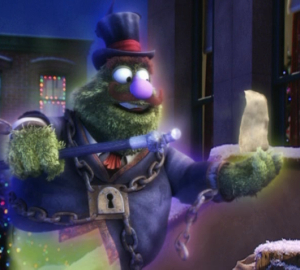
Early on, many of the animated characters in Elmo's World - such as Elmo's computer, drawer, shade and door - were performed in real-time alongside through the use of motion-capture puppeteering. However the use of motion-capture performances was dropped as production got more complicated. Now, simple stand-ins and markers are used and the animated characters are added in post-production using traditional key-frame computer animation techinques.
The Christmas ghosts in A Sesame Street Christmas Carol - Rhubarb the Grouch, Christmas Carole, and iSam - were animated using traditional key-frame animation techniques by Magnetic Dreams. The company also animated the Twiddlebugs in various productions and promos, including a series of Sesame Street inserts.
Abby Cadabby was adapted into a computer animated form for the Sesame Street segment Abby's Flying Fairy School.
Digital enhancements
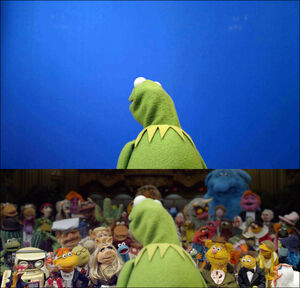
Digital enhancements have been used to make the Muppets appear as autonomous, stand-alone beings free of their strings, rods, wires, and puppeteer operators. Unlike most effects-heavy movies, Muppets productions have used digital effects to conceal what's actually there instead of adding things to the scene.
Beginning with Muppets From Space, the arm rods of the Muppets were digitally removed in major productions.
Other times, digital effects to used to compositing a shot or allowing for alternate puppetry techniques.
Other times, digital effects are used to enhance a scene or add other specific effects. For example, in The Muppets, digital enhancements were used to alter Walter's reflection in a carnival mirror.[4]
Henson Digital Puppetry Studio
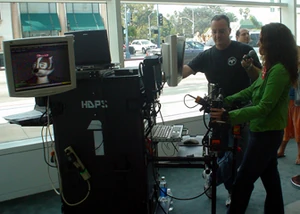
Puppeteer Julianne Buescher demonstrates the Henson Digital Performance System at the Museum of Television and Radio in Los Angeles
Brian Henson has continued his father’s work in the area of motion-capture digital puppeteering with the development of the Creature Shop's Henson Digital Puppetry Studio (HDPS).The HDPS allows for digital puppets to be controlled and manipulated in fully digital environments.
In 2000, Henson produced MuppetToons, a series of shorts featuring digitally puppeteered and computer-rendered versions of the classic Muppet characters. A demonstration of the digital Muppets were shown to fans at MuppetFest.
Henson's PBS series Sid the Science Kid is produced with the digital puppetry system. Other HDPS series and productions include Frances, The Skrumps, and Wilson & Ditch: Digging America.
Sources
- ↑ Jim Henson's Red Book - 9/10-12/1970 – ‘In Denver doing Computer Animation for Sesame #’s 10 and 4 – Second season of Sesame Street.’
- ↑ Jim Henson's Red Book - 5/21/1983 – ‘Meeting with Digital Productions.’
- ↑ Jim Henson's Red Book - 4/-/1988 – ‘Working w/Kirk Thatcher on computer generated character – Later Waldo’
- ↑ How Digital Effects Gave 'The Muppets' New Freedom

